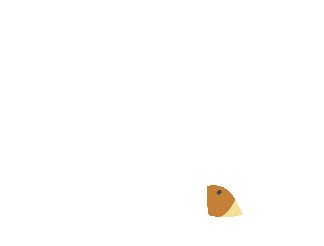
Home School
All learning begins at home - should it continue there?
Your child is always learning, and she learns fastest between birth and eight years. So don’t waste those vital learning years.” This is an extract out of a book I wrote with Gordon Dryden, back in 1995, called ‘The Reading Revolution. The easy way to teach your child to read even before school’. To continue, “That doesn’t mean trying to impart all the world’s knowledge. Simply be aware that your child’s mind is like a dry sponge. Make sure that the right information is being soaked up. Start by talking to your baby. She can hear well from birth. So talk about everything that you do together. Your voice will already be familiar to her.” You can teach your child everything and anything and the great news is that it will all be absorbed like water into a dry sponge.
Learning is all about survival, whether it a kitten batting a toy mouse around the carpet or a child watching pictures of words with his Mum. Play and learning are actually quite intertwined. Playing and having fun is the basis for all learning. And there is nothing more fun for a baby than ‘learning’ with Mum.
So, learning is fun and it starts from birth; but what do I need?

When we first started out, we discovered there was not a lot of quality resources for the very young. We wanted to teach using true to life art and we wanted factual information but that was still pertinent to a young child. What we found instead was that most books written for preschoolers are not true to life and are instead utilize cartoons in their art. While some of these materials have their place; in homeschooling you do need access to factual depictions and portrayals to “accelerate” and fire the young brain. As Buckminster Fuller once said: “All children are born geniuses, and we spend the first six years of their lives de-geniusing them.”
Glen Doman set prerequisites for flashcards from his “Teach your Baby” series of writings. Flashcards need to be precise, discreet and unambiguous. By precise, Doman means accurately drawn portrayals that can be recognized when the time occurs in the real world. By discreet, Doman speaks of no distractions. The child must be looking at the same object as you are when the “lesson” is being given. Finally, by unambiguous, Doman is here referring to the labelling of the said object. It is a ‘Blue Persian cat’ not a ‘kitty’. If you are going to learn a label you may as well as learn the right label from the beginning. It takes no more effort on the part of the child to do so.
This is even more important when learning the sounds of the letters or phonics. A great deal of confusion is caused by presenting "a" as in "cat" in isolation from the letter's other sounds. Even if you get the right sound for the letter (not its name "ay"), in the word "cat", when confronted with the words baby, aquarium and water, it becomes apparent that "a" has four sounds. If you tell the new learner it has 4 sounds from the word go, they learn to recognise whole words that demonstrate each sound of the letter "a" and are prepared for it to be more challenging then the single sound"Bih" of the letter "b". Associating letters with images that illustrate their sounds is a Reading Master innovation that has born fruit not just for the early learner but for confused learners of all ages and language backgrounds. (see RM disentangling dyslexia).
Show your child whole words from the language from early; particularly those words that describe people, things or actions they are performing or interacting within their world. The more real they are to them, the more quickly your child picks up on them.
Whole words for babies and preschoolers are viewed as complete pictures and can easily be recognised by their form and overall shape. In our Phonic Reader books, we have included 10 words that commonly occur in English but that also occur in the story. They appear in a large type so that even young eyes can focus on them. For the first few years, it is recommended that the words be 6cm (2.5 inches) high.
Examples of some useful resources



SOUNDS FLASHBOOKS: contain all 70 spellings of the 44 sounds in English together with an associated image that assists in remembering the sound the letter or combination of letters make. From 12-24 months, these "phonograms" and the associated image can be 'flashed' after each other in exactly the same way the images in the FlashBooks and the whole words in the fronts of the Sounds Readers are. Despite some educators suggesting that the phonograms should be presented in a graduated format - easiest to hardest, it doesn't make any difference to do this for the child. The child sees a single letter or combination of 4 letters as a single unique image at this age. In fact, the practice of presenting the sounds of single letters first, then blends and then complex multiples, may actually make learning all of the phonograms more difficult. For instance, the letter b only has one sound 'bih' but the very first letter in the alphabet - usually presented just as 'a as in apple' has 4 sounds that need to be known ( a as in apple, a as in baby, a as in water, a as in aquarium). If just one is presented much confusion will result later on. Our assessment of what is easier to learn is presented in Sounds FlashBook 1 and an adult perception of what is more difficult is reserved for Sounds Flashbook 5 - because it is important to separate the phonograms into presentable ideal session length packets, more than it is to graduate or categorize, them we believe.
FLASHBOOK READERS: are true-to-life, stories that build upon the information presented in their associated FlashBooks. They are wonderful to read to children from an early age and once words and phonograms are being recognized, they are true-to-life first readers.
THE PHONIC DVDs: (free excerpts online) collectively present the 44 sounds each indispersed with animated versions of the Sounds Reader storybooks that use those sounds in high concentration. They also present 100 keywords for whole-word recognition. In the top right-hand corner of the screen, Denise can be seen pronouncing each of the phonograms as they come up on screen. This technique has assisted ReadingMaster to be the tool of choice for people of all ages who wish to learn English as a second language and for teachers/parents to get there pronunciation and technique correct to teach the students in their care. Of course, all of this has been integrated into the new iBooks. These video sequences are useful to be played in the environment of very young children to listen to the sounds, ages 1-4 will enjoy them and learn from them. Age 3 and up have the fine motor skills and may prefer something more interactive, choosing the interactive modes of the CD-ROM for this material and will love the new IBook interactivity for self-driven learning.
Robyn Smith, Wife, Mother and Homeschooler: Dear Denise, as a homeschooling Mum my time is devoted to my children's needs and education most of the time. My eldest child is Michael. He is 5 1/2 years. He loves reading and maths and is doing extremely well in both. We only bought ReadingMaster when Michael was four years old, although he was exposed to it at age 2 1/2 by a friend of mine who lent it to me for a while to show to my husband. Michael had speech delays as a result of a traumatic accident at age 17 months. He totally stopped talking, only communicating through crying and hand motions.
We were told this is quite normal after trauma and told not to worry, but after a year I was starting to get sick of people asking me if he was deaf. We borrowed the programme for a week and after a couple of days watching just the video, probably three times a day, he started saying the words, "bubble", "duck", etc. By the end of the week, he was talking in sentences. We had of course continued reading to him several times a day throughout his silence as it was his first love. When he was three, I made flashcards of family members names and familiar words and started to show these to Michael every time he asked for them. He had learnt about 20 sight words by four, which I felt was wonderful considering his delays in speech. We got ReadingMaster when he was four. He absolutely loved it, especially the stories about your son, Michael. He started to imagine he was having adventures and doing what Michael was doing. He couldn't read yet, but he could recite the whole book word perfect most times and started to ask the most fascinating questions. At 5 1/2 Michael has about 200 sight words, and if he doesn't know the word will try to work it out by sounding it out.
Christian, now 4 years old loves books also. He has been confident in using books from an early age and has always been very gentle with them. He wasn't very interested in us reading to him until he was about three. He would take the book off you and say "I read it", and sit on the ground and leaf through the book himself. He loves Maths and is especially captivated by the ReadingMaster Maths programme. He has learnt all the shapes from the first set, has mastered counting to twenty, which is all I have worked on him with at present and had mastered a wide range of colours from an early age. He loves jigsaw puzzles and has been doing puzzles since he was 18 months old with ease. For his third birthday, he was given a 60 piece puzzle which he mastered easily. His love for Maths is evident when I am teaching Michael. I will give Michael an oral maths problem and before Michael has a chance to answer it Christian has already given me the answer.
Evelyn is 2 1/2 years old and is enjoying the ReadingMaster videos very much. She is using the flashcards and is always eager when they are out. When asked what story she would like will often go to the bookshelf and choose a ReadingMaster book. She is an articulate speaker and talks with very descriptive language.
Isabel is 17 months old and is already in love with books. She will often muscle in on storytime with her own choice of book insisting that hers be read. She is using common phrases often in speech and compared to our other children is speaking well for her age.
I can't give you a reading age for Michael as he has not been assessed, but compared to his other friends he is reading as well or better. Their love of learning, however, is apparent in everything they do. Last term we studied weather and the Weather book was used often especially during cloud spotting and as a reference tool for Michael for how to spell words if I was unavailable. I would highly recommend ReadingMaster and ReadingMaster Maths to anyone considering homeschooling. I have found that the language used and descriptions capture a child's attention and build creative and adventurous imagination. Both programmes are an integral part of our Homeschool and I have found them an invaluable asset. Thank you for your time Denise. I am also interested in finding out more about your values books as I think the idea is wonderful. Could you please give me more information? Yours sincerely, Robyn Smith, Wife, Mother and Homeschooler.


